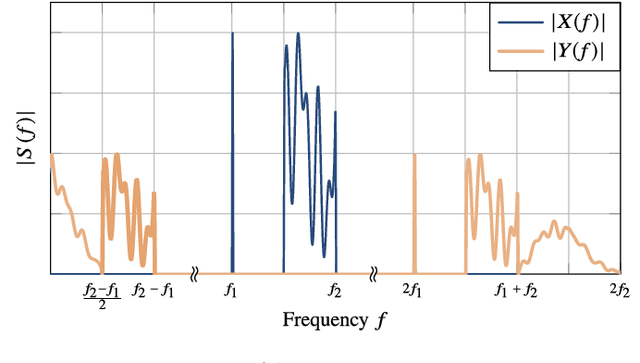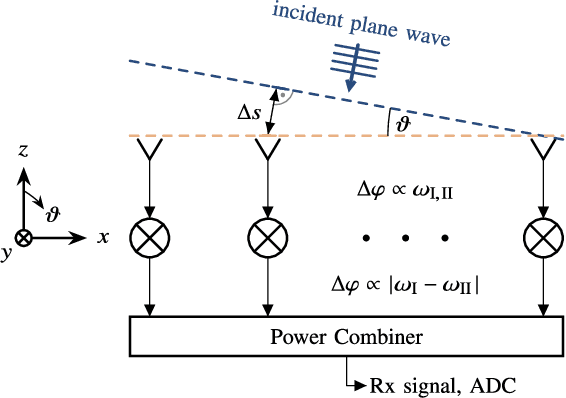A Millimeter-Wave Self-Mixing Array with Large Gain and Wide Angular Receiving Range
Paper and Code
May 18, 2021



The concept of self-mixing antenna arrays is presented and analyzed with respect to its beneficial behavior of large gain over a wide angular range. The large gain is attained by an antenna array with large element spacing, where all array element signals are combined approximately coherently over the entire angular receiving range. This functionality is achieved by the self-mixing principle, where an exact description via an intermediate frequency (IF) array factor is derived. For verification purposes, a 4 x 2 self-mixing array is fabricated and measured in the frequency range from 34 GHz to 39 GHz. A multiple-resonances millimeter-wave microstrip patch antenna has been especially developed to achieve large bandwidth and a wide angular receiving range. The broad beamwidth is achieved by two parasitic patches and suitable radiation characteristics of the resonant modes. The self-mixing of the receive signal is realized at each antenna element by a Schottky diode with an optimized operating point. The down-converted array element signals are then combined and measured at the IF. The receive power is increased significantly over a large angular range as compared to conventional array feeding techniques. The simulation results are verified by measurements, which show very good agreement.
 Add to Chrome
Add to Chrome Add to Firefox
Add to Firefox Add to Edge
Add to Edge